
TR’s Mark on US Army Uniforms
April 06, 2015Posted by: Keith Simon Category: Material culture(0) CommentsIn 1901, Theodore Roosevelt wrote his New York State National guard friend, Colonel William Cary Sanger, whom he had appointed to study Swiss and British reserve forces in Europe, “The first requisite in the service uniform is absolute ease and freedom. Anything that binds the body, particularly the knees, hips and arms, and anything that confines the body is all wrong. . . . The present [Army] uniform is all right in the material, but dark blue is one of the worst possible colors for campaign use. The shirt should invariably be of the neutral tint, like gray or brown." Before TR wrote that di ...
Read More »
The writer is an assistant professor of history and chair of the Department of American Culture and Literature at Bilkent University in Ankara, Turkey On February 14, 1884, Theodore Roosevelt penned what may be the most famous diary entry in American history. “The light has gone out of my life,” TR wrote, referring to the death of his wife Alice Lee and mother Mittie on the same day. He then marked the page with a large black “X.” That diary entry reflected a crossroads for the 25 year old Roosevelt. Within months he would seemingly give up his political career—and the care of his newborn daug ...
Read More »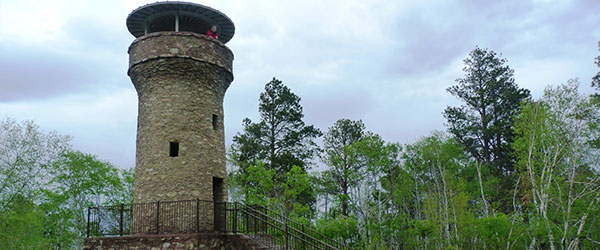
Beyond Borglum: Finding TR in the Black Hills
October 29, 2014Posted by: Duane Jundt Category: Material culture(2) CommentsIf you set out in search of Theodore Roosevelt’s America, your travels would inevitably lead you to the Black Hills of South Dakota and the monumental image of Roosevelt carved on the face of Mount Rushmore by sculptor Gutzon Borglum. After paying for parking, snapping a picture or two, pondering the faces for a short spell and buying the requisite t-shirt, you may consider your time with Roosevelt in South Dakota to be at an end, but Roosevelt can be found elsewhere in the Hills if you know where to look. In Rapid City, the gateway community to the Black Hills which promotes itself as the Ci ...
Read More »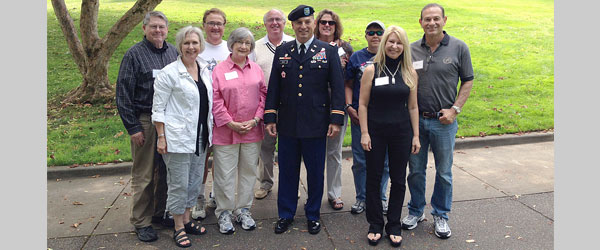
A tip of the hat to Chittenden Locks and the Panama Canal
October 11, 2014Posted by: David Bryant Category: Material culture(0) CommentsIn honor of the centennial of the opening of the Panama Canal (August 15, 1914), considered by many as the greatest achievement of Theodore Roosevelt as president, the Washington State Chapter of the TRA (WATRA) held a special chapter visit and tour of the Washington Ship Canal and Chittenden Locks (often referred to as the Ballard Locks). The Panama Canal and the Chittenden Locks are often compared. They are both on the eastern rim of the Pacific Ocean, they both provide a transition for large ships between fresh and salt water, they were both finished in the early years of the twentieth cent ...
Read More »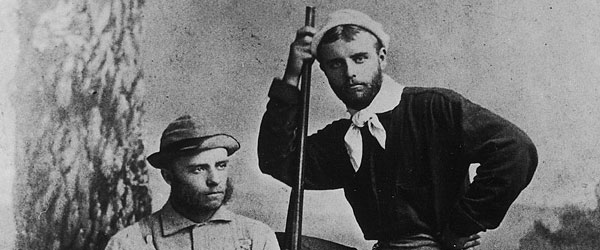
Elliott Bulloch Roosevelt: A Fleeting Life of Suffering – a...
September 22, 2014Posted by: Chip Bishop Category: Roosevelt Family(0) CommentsYou approach the old graveyard with anticipation and trepidation. The slate steps descend in a narrow spiral to a small courtyard where the black gnats give an unwelcomed greeting. It’s a bright August day, but the graveyard is shaded by tall oaks and steamed by dense humidity. “There it is,” declares the sexton, almost proud of the small, churchlike mausoleum ahead of us, now decrepit. Like in the old movies, he flashes an oversized, brass skeleton key. He seems confident that it will unlock the crypt, and it does – on the first try. The heavy metal door creaks open, and sunlight rushes into ...
Read More »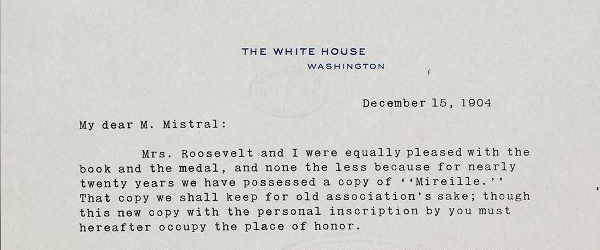
Correspondance Frédéric Mistral – Théodore Roosevelt 190...
September 15, 2014Posted by: Serge Ricard Category: Material culture(0) CommentsAll students of the 26th presidency have noted Theodore Roosevelt’s immense culture and voracious reading. He was indeed a “literary fellow,” to use Katherine Joslin’s phrase in her recent Eccles Centre lecture at the British Library. The number of contemporary writers he knew and corresponded with is truly amazing. One of his most unexpected interests in foreign literature concerned Provençal poetry. He was aware of the renaissance of Provençal letters initiated by Frédéric Mistral (1830-1914) in the second half of the 19th century. A lexicographer and writer, Mistral founded the Félibrige wi ...
Read More »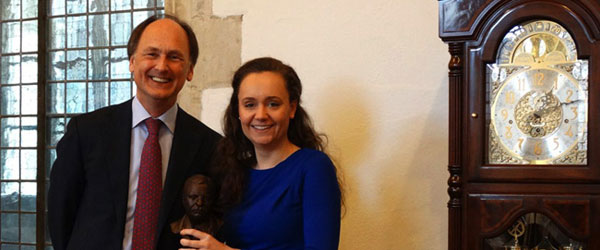
Acquainted with the Roosevelts: TRAHA Travel Report
September 08, 2014Posted by: Ruth Akker Category: Material culture(0) CommentsIt was such an honor, but perhaps an even greater surprise, to be the recipient of the Theodore Roosevelt American History Award 2014, which included a trip to New York State. I had, previously to winning the award in March 2014, no idea that to win meant to travel, and to travel seemed a coincidentally appropriate price for an MA thesis on travel writing. Writing this report about my travels and experiences leaves me with the uncanny feeling of having figuratively come full circle. Because I had to plan my trip to New York State in June rather than later in the year as previous winners did, m ...
Read More »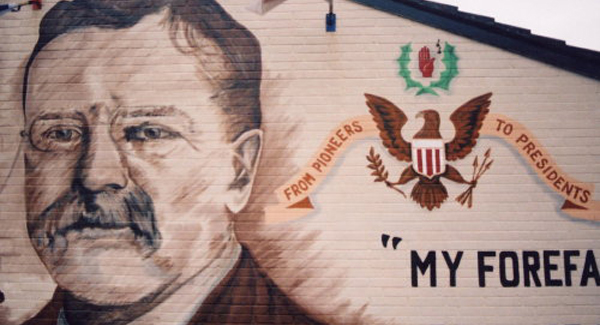
Roosevelt in the Strangest Places
March 24, 2014Posted by: Michael Cullinane Category: Uncategorized(0) CommentsEver since I began a research project to examine Theodore Roosevelt’s image in popular culture, I cannot help but see him everywhere. Even so, I hardly expected to find him on a political mural in Northern Ireland, let alone three such shrines. Painted murals in Northern Ireland adorn the façade of many buildings. They depict the country’s political and religious struggles, most often referring to the decades of violence that began in the 1960s. The murals typically portray one side’s perspective. Republican murals showcase nationalist heroes such as hunger striker Bobby Sands and IRA gunmen w ...
Read More »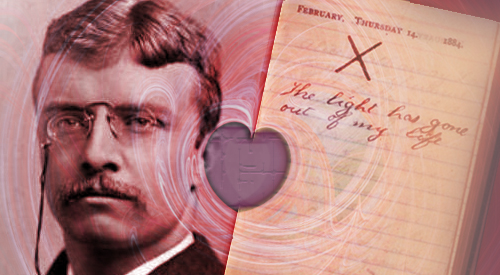
Valentine’s Day is a universal symbol of romance and love. But for Theodore Roosevelt, it would forever be a painful reminder of the loss of his mother, Martha, and first wife, Alice, who died within hours of each other on February 14, 1884. This twin tragedy is unthinkable in its scope and impact on a young man who seemed to have everything going for him. It is understandable that TR thought his life was all but over at this point and scratched a big X in his diary along with these poignant words, "The light has gone out of my life." Fortunately, not only for TR personally but also for the co ...
Read More »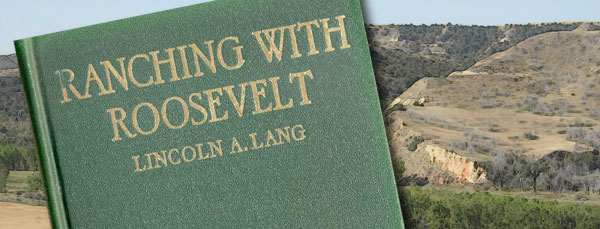
Revisiting Ranching with Roosevelt
January 14, 2014Posted by: Duane Jundt Category: Uncategorized(0) CommentsMuch, if not most, of what we know about Theodore Roosevelt’s time in the Badlands of western North Dakota comes from his own considerable writings such as his Hunting Trips of a Ranchman (1885) and Ranch Life and the Hunting Trail (1888). Another valuable and underappreciated source about those days is Lincoln Lang’s 1926 Ranching with Roosevelt. Not only does Lang, who identifies himself as “a companion rancher”, give the reader anecdotes about and insights into the brief ranching days of Roosevelt, he also relays the history of the Badlands in the years after the New Yorker’s departure. In ...
Read More »

